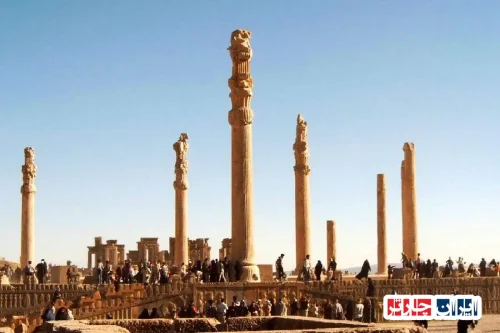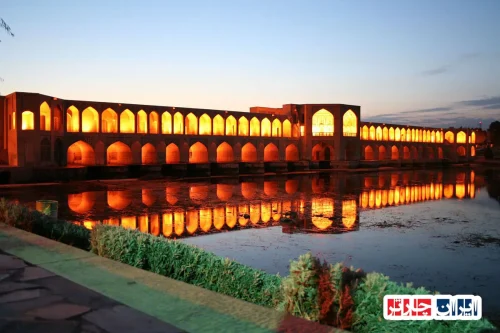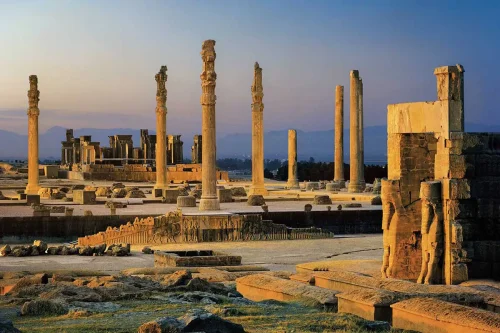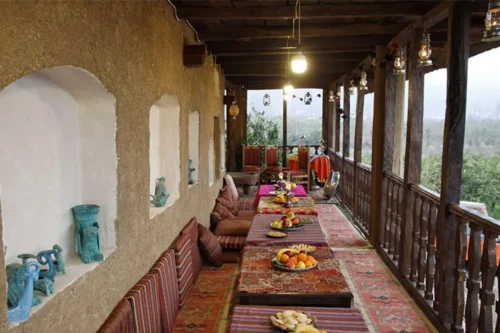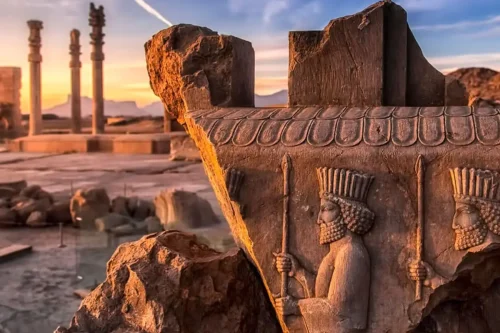From a Political Appointment to Issuing Golestan Palace Ownership Document
This week, the cultural heritage and tourism sector witnessed significant developments ranging from a political appointment to the issuance of Golestan Palace’s ownership document. The appointment of the new Deputy Minister of Tourism, sanctioned by Salehi Amiri, signifies the government’s efforts to boost the country’s tourism industry. This appointment, made by the Minister of Cultural Heritage, has elicited various reactions in political and tourism circles. Many tourism professionals regard this move as a political choice and are hopeful it will foster further growth in the sector.
From a Political Appointment to Issuing Golestan Palace Ownership Document
In addition to these changes, the closure of museums was another topic of the week. Due to Tehran’s air pollution, museums under the Ministry of Cultural Heritage and Tourism decided to close on Wednesday and Thursday to protect visitor health. This two-day closure prevented tourists from accessing valuable cultural and historical collections in these centers.
From a Political Appointment to Issuing Golestan Palace Ownership Document
Another achievement of the week was the issuance of the Golestan Palace ownership document. After 89 years, the ownership document for the Golestan Palace, spanning 50,000 square meters, was issued by the Molavi Registration Office on behalf of Cultural Heritage. Golestan Palace, part of Tehran’s historic area formerly known as the ‘Royal Citadel of Tehran,’ is now recognized as national cultural heritage, marking a significant step legally and historically.
From a Political Appointment to Issuing Golestan Palace Ownership Document
Furthermore, the opening of the “Splendor of Ancient Iran” exhibition in China was another significant news item this week. This exhibition, inaugurated by senior cultural officials of our country at the Xinjiang Uygur Autonomous Regional Museum in Urumqi, had previously been shown in Beijing and Shanghai. It features 211 artifacts and 5 recreated pieces from Iran’s history, offering a unique opportunity for Chinese visitors to familiarize themselves with ancient Iranian culture and civilization.
Overall, this week reflects the government’s and cultural heritage and tourism sector stakeholders’ efforts to develop and protect national heritage and enhance international interactions. The appointment of the new Deputy Minister of Tourism, the issuance of the Golestan Palace ownership document, and the inauguration of an exhibition abroad are positive steps in this direction. It is hoped that with governmental support and diligent efforts by industry stakeholders, Iran’s tourism sector will grow and thrive, and the country’s cultural heritage will be recognized globally.
Appointment of New Tourism Deputy: From a Political Appointment to Issuance of Golestan Palace Ownership Document
The appointment of a new Deputy for Tourism by the Minister of Cultural Heritage and Tourism was a significant step in the government’s efforts to boost Iran’s tourism industry. This appointment, considered as possessing political qualifications, has elicited varied reactions across different circles. Many tourism activists view this move as a strategic choice, hoping it will aid in further developing the industry. From a political appointment to the issuance of the Golestan Palace ownership document, these changes indicate the government’s commitment to preserving and promoting the country’s cultural heritage.
Closure of Museums Due to Air Pollution: From a Political Appointment to Issuance of Golestan Palace Ownership Document
This week, due to the increased air pollution in Tehran, a decision was made to close museums under the management of the Ministry of Cultural Heritage and Tourism. This decision, which included closing museums on Wednesday and Thursday, was primarily aimed at protecting the health of visitors. The museum closures have had significant impacts on domestic tourism, demonstrating the government’s dedication to preserving public health while also safeguarding cultural heritage.
Issuance of Golestan Palace Ownership Document: From a Political Appointment to Issuance of Golestan Palace Ownership Document
After 89 years, the Registration Department issued the Golestan Palace ownership document, covering an area of 50,000 square meters, to the Cultural Heritage representative. This action not only helps stabilize the legal ownership of this historical complex but also illustrates continuous efforts to preserve and maintain the country’s cultural heritage. The Golestan Palace, recognized as the “Tehran Royal Citadel,” stands today as a prominent example of Iran’s cultural heritage.
Opening of Historical Artifacts Exhibition in China: From a Political Appointment to Issuance of Golestan Palace Ownership Document
The exhibition “Splendor of Ancient Iran” was inaugurated with high-ranking Iranian cultural heritage officials at the Xinjiang Regional Museum in Ürümqi, China. This exhibition, which features 211 objects and 5 recreated items from Iran’s history, provides a unique opportunity to introduce Iran’s ancient culture and civilization to Chinese audiences. From a political appointment to the issuance of the Golestan Palace ownership document, this event symbolizes Iran’s international efforts to elevate its cultural heritage status.
Specialized Meetings During Research Week: From a Political Appointment to Issuance of Golestan Palace Ownership Document
The Cultural Heritage Research Institute organized numerous specialized meetings in coordination with other educational and research centers. Covering topics such as “Silk Road Structures” and “Protection and Restoration of Zahhak Castle,” these meetings represent Iran’s commitment to research and cultural heritage preservation. From a political appointment to the issuance of the Golestan Palace ownership document, these events play a key role in strengthening the country’s research and tourism ecosystem.
Protection of Agricultural Heritage: From a Political Appointment to Issuance of Golestan Palace Ownership Document
The Cultural Heritage Research Institute, in collaboration with the University of Science and Industry and the Agricultural Jihad, is implementing multiple programs to protect the nation’s agricultural heritage. These programs include studies on Birjand gardens and disaster management at the Tabriz market World Heritage sites. From a political appointment to the issuance of the Golestan Palace ownership document, these endeavors highlight the special attention to sustainable preservation and utilization of agricultural heritage.
Development of Iran’s Tourism Industry: From a Political Appointment to Issuance of Golestan Palace Ownership Document
With the appointment of the new Deputy for Tourism and the issuance of the Golestan Palace ownership document, Iran’s tourism industry is set on a growth and development path. These structural changes not only aid in cultural heritage preservation but also create new economic opportunities, leading to job creation and attracting both domestic and international tourists. From a political appointment to the issuance of the Golestan Palace ownership document, these transformations reflect the government’s comprehensive approach in supporting the tourism industry.
Support for Tourism Education Institutions: From a Political Appointment to Issuance of Golestan Palace Ownership Document
With the official directive from the Ministry of Economy, tourism education institutions are now formally considered part of the tourism industry’s activities. These institutions play a vital role in training professional and skilled workforce for the tourism sector. From a political appointment to the issuance of the Golestan Palace ownership document, these supports greatly aid in enhancing the tourism ecosystem and improving the quality of services offered to tourists.
Increase in International Tourism Interactions: From a Political Appointment to Issuance of Golestan Palace Ownership Document
The opening of the “Splendor of Ancient Iran” exhibition in China and other international events indicate increased interactions between Iran and other countries in the tourism sector. These interactions not only help introduce Iran’s culture and history but also create new opportunities for attracting foreign investment and developing tourism infrastructure. From a political appointment to the issuance of the Golestan Palace ownership document, these efforts contribute to elevating Iran’s position on the global tourism map.
Effects of Air Pollution on Tourism: From a Political Appointment to Issuance of Golestan Palace Ownership Document
Air pollution in Tehran resulted in the closure of museums and cultural sites, directly impacting both domestic and foreign tourism. This action, from a political appointment to the issuance of the Golestan Palace ownership document, reflects the government’s sensitivity to environmental issues and efforts to preserve public health. Additionally, this decision could provide a better environment for future visitors and contribute to improving tourism quality.
Future Plans for Cultural Heritage and Tourism: From a Political Appointment to Issuance of Golestan Palace Ownership Document
Given the appointment of the new Deputy for Tourism and the issuance of the Golestan Palace ownership document, future plans in Iran’s cultural heritage and tourism sector are designed to incorporate both historical heritage preservation and tourism industry enhancement. These plans include developing tourism infrastructure, increasing international advertising, and hosting cultural and historical events. From a political appointment to the issuance of the Golestan Palace ownership document, these programs can play a vital role in the country’s economic and cultural growth.
News Source : https://www.mehrnews.com/news/6315060/%D8%A7%D8%B2-%DB%8C%DA%A9-%D8%A7%D9%86%D8%AA%D8%B5%D8%A7%D8%A8-%D8%B3%DB%8C%D8%A7%D8%B3%DB%8C-%D8%AA%D8%A7-%D8%B5%D8%AF%D9%88%D8%B1-%D8%B3%D9%86%D8%AF-%D9%85%D8%A7%D9%84%DA%A9%DB%8C%D8%AA-%DA%A9%D8%A7%D8%AE-%DA%AF%D9%84%D8%B3%D8%AA%D8%A7%D9%86

Frequently Asked Questions
- Who is the new Deputy of Tourism and what is his background?
- Anoushiravan Mohseni Bandpei was appointed as the Deputy for Tourism by Salehi Amiri. Born in 1956 in Nowshahr, he previously served as Governor of Tehran from 2018 to 2021, has been a parliament member for three terms, served as caretaker of Ministry of Cooperatives, Labour, and Social Welfare for three months, as caretaker of Social Security Organization for two months, and as head of the Welfare Organization for three years.
- Why do some tourism activists consider the appointment of the new Tourism Deputy a political choice?
- Many tourism activists believe the appointment made by the Minister of Cultural Heritage is more political than specialized, as Mohseni Bandpei is more known as a politician rather than someone with direct experience in tourism.
- What decision did the Ministry of Economy make regarding tourism educational institutions?
- The Ministry of Economy officially announced that tourism education institutions are now formally considered part of the tourism industry’s activities. These institutions are now licensed to operate within the tourism sector and can benefit from the related supports and incentives.
- What is the significance of tourism educational institutions in the tourism industry?
- Tourism educational institutions play a crucial role in training professionals and job holders in various fields of the tourism industry. By offering practical and skill-based training courses, these institutions contribute to human resource development within the tourism industry and play an essential role in its ecosystem.
- What programs has the Cultural Heritage Research Institute had during Research Week?
- The Cultural Heritage Research Institute organized 45 specialized meetings and participated in the exhibition of research achievements, technology, and fan market during Research Week. Meetings covering topics such as ‘Silk Road Structures’, ‘Study, Protection and Restoration of Zahhak Castle’, ‘Birjand Gardens’, ‘Disaster Management Solutions in World Heritage Sites’, and ‘Agricultural Heritage’ were held in collaboration with various universities and centers.
- Under what slogan and when was the National Week of Research and Technology held?
- The National Week of Research and Technology 2025 was held with the slogan ‘Research and Technology Leading Production Leap with People’s Participation’ from December 14 to December 20.
- Why were museums in Tehran closed during this week?
- Due to severe air pollution in Tehran and the governorate’s announcement of closure for schools, universities, and governmental offices, Tehran’s museums were also closed for two days to protect the health of visitors and staff.
- To whom was the Golestan Palace ownership document issued and after what duration?
- The Golestan Palace ownership document, covering 50,000 square meters, was issued to the Director General of the Molavi Registration and Property Department, representing Cultural Heritage, Tourism, and Handicrafts. This occurred 89 years after the establishment of Golestan Palace.
- What is the historical significance of Golestan Palace and why is it important?
- Golestan Palace is part of a historical compound in Tehran formerly known as the ‘Tehran Royal Citadel’. With its beautiful and historic architecture, the palace is a symbol of Iranian art and culture, holding significant importance in the country’s cultural heritage.
- In which country was the ‘Splendor of Ancient Iran’ exhibition opened and what does it include?
- The popular ‘Splendor of Ancient Iran’ exhibition was opened at the Xinjiang Regional Museum in Ürümqi, China. It includes 211 items and 5 recreated works showcasing about 3,000 years of Iran’s history.
- How was the ‘Splendor of Ancient Iran’ exhibition received in previous locations?
- The ‘Splendor of Ancient Iran’ exhibition was previously well-received in locations such as Beijing and Shanghai, capturing the interest of many enthusiasts of Iran’s culture and history.
- Which universities and educational centers participated in the research meetings?
- Universities such as Kerman Azad University, Islamic Art University of Tabriz, Shahid Beheshti University, Imam Khomeini International University of Qazvin, and University of Science and Industry participated in various research meetings in collaboration with the Cultural Heritage Research Institute.
- What actions have been taken for disaster management in World Heritage sites?
- During the ‘Disaster Management Solutions in World Heritage Sites’ meeting, in collaboration with Islamic Art University of Tabriz, the Tabriz Market World Heritage site, and the East Azerbaijan Provincial Office, strategies for disaster management and prevention at these sites were discussed and reviewed.
- What role does the Cultural Heritage Research Institute play in the process of restoring and protecting historical buildings?
- The Cultural Heritage Research Institute, in collaboration with universities and research centers, plays a significant role in the study, protection, and restoration of historical buildings. By organizing specialized meetings and exhibitions, the institute helps improve restoration and protection techniques for cultural heritage.
- How has air pollution impacted cultural and educational activities in Tehran?
- Severe air pollution in Tehran led to the closure of schools, universities, governmental offices, and museums for two days. These measures were taken to protect public health and prevent further harm due to air pollution.
- What important role does the Cultural Heritage Research Institute play in exhibitions?
- By participating in exhibitions such as the ‘Splendor of Ancient Iran’, the Cultural Heritage Research Institute showcases its research achievements and provides an opportunity to introduce Iran’s culture and history to international audiences.


